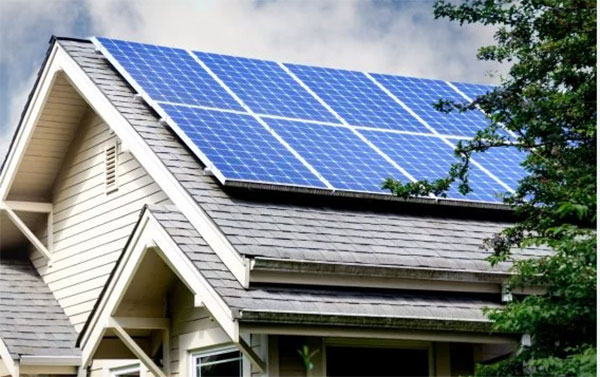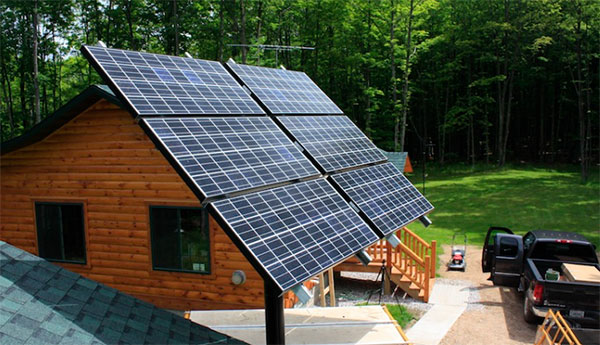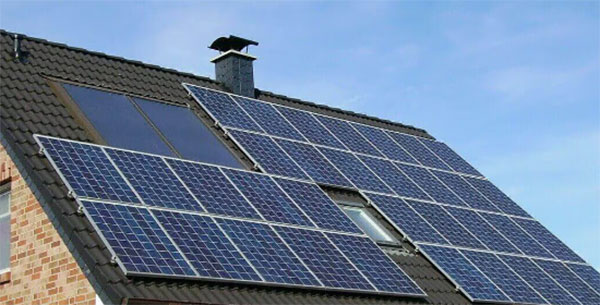Description
The best roof for solar panels is south-facing, with a 30-degree pitch, and made of durable, strong materials.Roof Materials and Their Suitability for Solar Panels
Selecting the right roof material is crucial for optimizing solar panel installations. The material not only impacts the installation process but also affects the overall efficiency and longevity of the solar energy system.Metal Roofs: Advantages for Solar Panel Installation
Metal is lightweight, enhancing its suitability for solar panels, and it typically has a long lifespan, often outlasting the solar panels themselves. Furthermore, metal roofs can improve the efficiency of solar panels due to their reflective properties. For instance, a metal roof can enhance the overall energy yield of photovoltaic systems by reflecting sunlight onto the panels. The installation cost of solar panels on metal roofs is generally lower compared to other materials. This cost efficiency arises from the ease of attaching mounting systems onto metal surfaces. In terms of specifications, metal roofs can support a wide range of solar panel sizes and weights without requiring significant structural modifications.Asphalt Shingles: Compatibility and Considerations
Asphalt shingles are a common roofing material and are generally compatible with solar panel installations. The key consideration for asphalt roofs is ensuring that the roof structure can support the additional weight of the solar panels. The average weight of solar panels is about 40 pounds per square foot, and this needs to be factored into the structural assessment. The installation process on asphalt shingle roofs is straightforward, but care must be taken to avoid damaging the shingles. The cost of installing solar panels on asphalt shingles is affordable for most homeowners, with the average installation price ranging depending on the size and complexity of the system.Tile Roofs: Challenges and Solutions for Solar Panels
Tile roofs, whether made from clay, concrete, or slate, present unique challenges for solar installations. The primary concern is the fragility of the tiles, which can be prone to cracking during the installation process. Despite this, tile roofs are highly durable and have long lifespans, often aligning well with the lifespan of solar panels. Special mounting systems are required for tile roofs, and these can increase the installation cost. The average cost for installing solar panels on tile roofs can be higher than other materials, largely due to the labor-intensive process and the need for specialized equipment.Flat Roofs and Solar Panel Options
Flat roofs offer a versatile platform for solar panel installations. One significant advantage is the ability to orient and angle the panels for optimal sun exposure, which can significantly improve solar efficiency. Flat roofs allow for the installation of larger solar panels, maximizing the use of available space.Roof Pitch and Orientation Impact on Solar Panel Efficiency
Understanding the influence of roof pitch and orientation on solar panel performance is essential for maximizing energy output. The right combination can significantly enhance efficiency and optimize the return on investment.Optimal Roof Pitch for Maximum Solar Energy Harvesting
The ideal roof pitch for solar panels typically matches the latitude of the installation location. For example, a house located at 35 degrees latitude should have a roof pitch of 35 degrees for optimal solar energy harvesting. This alignment ensures that solar panels receive the maximum amount of sunlight throughout the year. Solar panels on a roof with the correct pitch can increase energy efficiency by up to 20% compared to suboptimal pitches. The cost implications of adjusting roof pitch, if necessary, can vary greatly. However, the long-term gain in solar efficiency often outweighs these initial expenses.Directional Orientation: North, South, East, West Considerations
The orientation of the roof is another critical factor. In the Northern Hemisphere, south-facing roofs are ideal for solar panel installation. This orientation ensures that solar panels receive direct sunlight throughout the day, maximizing energy production.- South-facing roofs can improve solar panel efficiency by up to 30% compared to north-facing setups.
- East and west-facing roofs are less efficient than south-facing ones but can still be viable options, especially for households with higher energy consumption in the mornings or evenings.
Structural Integrity and Load Capacity for Solar Panels
Assessing and enhancing the structural integrity of a roof is a crucial step in solar panel installation. The roof must be able to support the additional weight of the solar panels to ensure safety and longevity of both the roof and the solar installation.Evaluating Roof Strength for Solar Panel Support
Before installing solar panels, a thorough evaluation of the roof's strength is necessary. This involves assessing the roof's age, material, and current condition. A typical solar panel installation adds an additional load of around 15 to 25 kilograms per square meter. Roofs designed for heavier loads, such as those in snow-prone areas, usually have the requisite strength for solar panels. Professional structural assessment can cost anywhere from a few hundred to a few thousand dollars, depending on the complexity of the structure and the extent of the evaluation needed. This assessment is a critical investment to avoid costly damages or safety hazards in the future.Enhancements and Modifications for Additional Load
If a roof is not structurally sound enough to support solar panels, enhancements and modifications may be necessary. Reinforcing the roof structure typically involves adding additional rafters or trusses. The cost of these enhancements can vary widely but could amount to several thousand dollars, depending on the roof's size and condition.Roof Size and Layout: Maximizing Solar Panel Placement
Maximizing solar panel placement requires a careful analysis of the roof's size and layout. This process involves several detailed steps and considerations:Calculating Available Roof Space for Solar Panel Arrays
- Measure the total area of the roof: This is the starting point for determining how many solar panels can be installed. For example, a roof with a total area of 100 square meters could potentially accommodate a significant number of panels.
- Subtract the space occupied by obstructions: Elements like vents, chimneys, and skylights reduce the usable area. It's essential to factor these into the calculations.
- Consider the size and power output of panels: The average residential solar panel, measuring about 1.6 square meters, typically produces around 320 watts under ideal conditions. Using this as a benchmark, you can estimate the number of panels that will fit and the potential power output.
- Factor in maintenance pathways: It's important to leave space for maintenance access, which might slightly reduce the number of panels that can be installed.
Designing Panel Layout for Irregular Roof Shapes
- Customize panel arrangements: Irregular roofs may require unique panel layouts to maximize sun exposure and fit within the available space.
- Use smaller or flexible panels: For complex roof designs, smaller panels or flexible solar technologies can offer more versatile placement options.
- Invest in customized mounting systems: These are crucial for securely attaching panels on irregular roof shapes and ensuring they are optimally angled for sun exposure.
- Consider innovative technologies: Options like solar shingles or thin-film panels, while more expensive, can better suit unique roof shapes and aesthetics.
Roof Age and Condition: Pre-Installation Assessment
Assessing the age and condition of a roof is a critical step before installing solar panels. This evaluation ensures that the roof can support the solar system throughout its lifespan without requiring significant repairs or replacements.The Importance of Roof Age in Solar Panel Installation
Roof age is a key factor in determining suitability for solar panels. Most solar panel systems have a lifespan of about 25 to 30 years. If a roof is nearing the end of its lifespan, it's advisable to replace or repair it before installing solar panels. Installing solar panels on an older roof may necessitate the removal and reinstallation of the panels when the roof needs replacing, which can add significant cost to the project. For roofs less than 10 years old, it's likely they can support a new solar system for the majority of its lifespan. However, roofs between 10 and 20 years old may require a closer inspection to determine their condition and suitability.Addressing Roof Repairs and Renovations Before Installation
Roof repairs and renovations are essential for older or damaged roofs prior to solar panel installation. Key points to consider include:- Inspecting for damage: Look for signs of wear, broken tiles, or leaks. These issues need addressing to ensure the roof can support solar panels.
- Evaluating structural integrity: The roof must have the strength to hold the weight of the solar panels, which is typically around 15 to 25 kilograms per square meter.
- Considering long-term durability: Ensure that the roof material and structure will last as long as the solar panels to avoid the need for future disassembly and reassembly.







